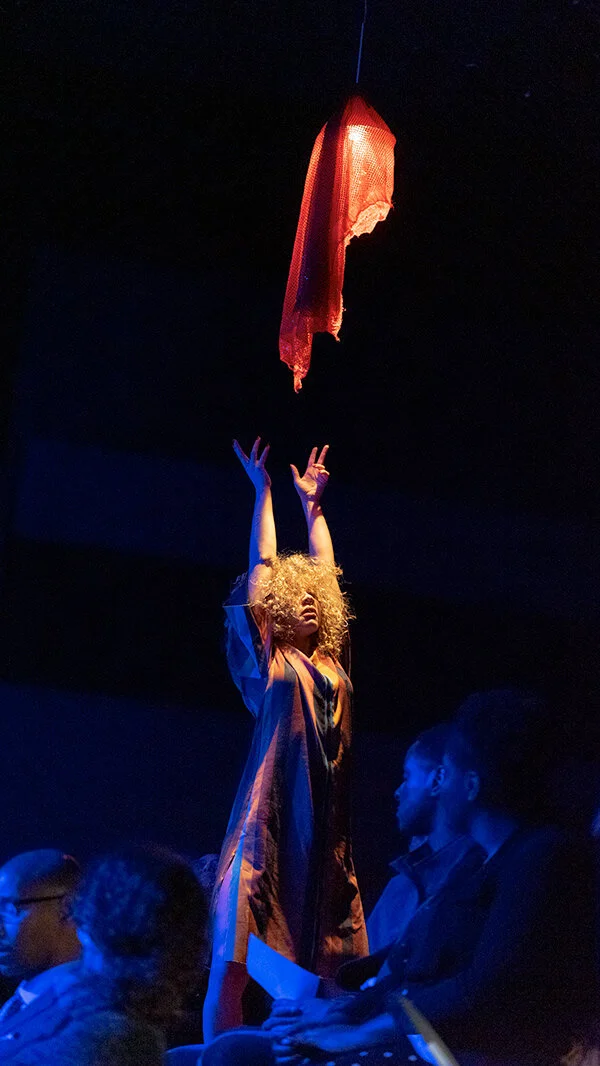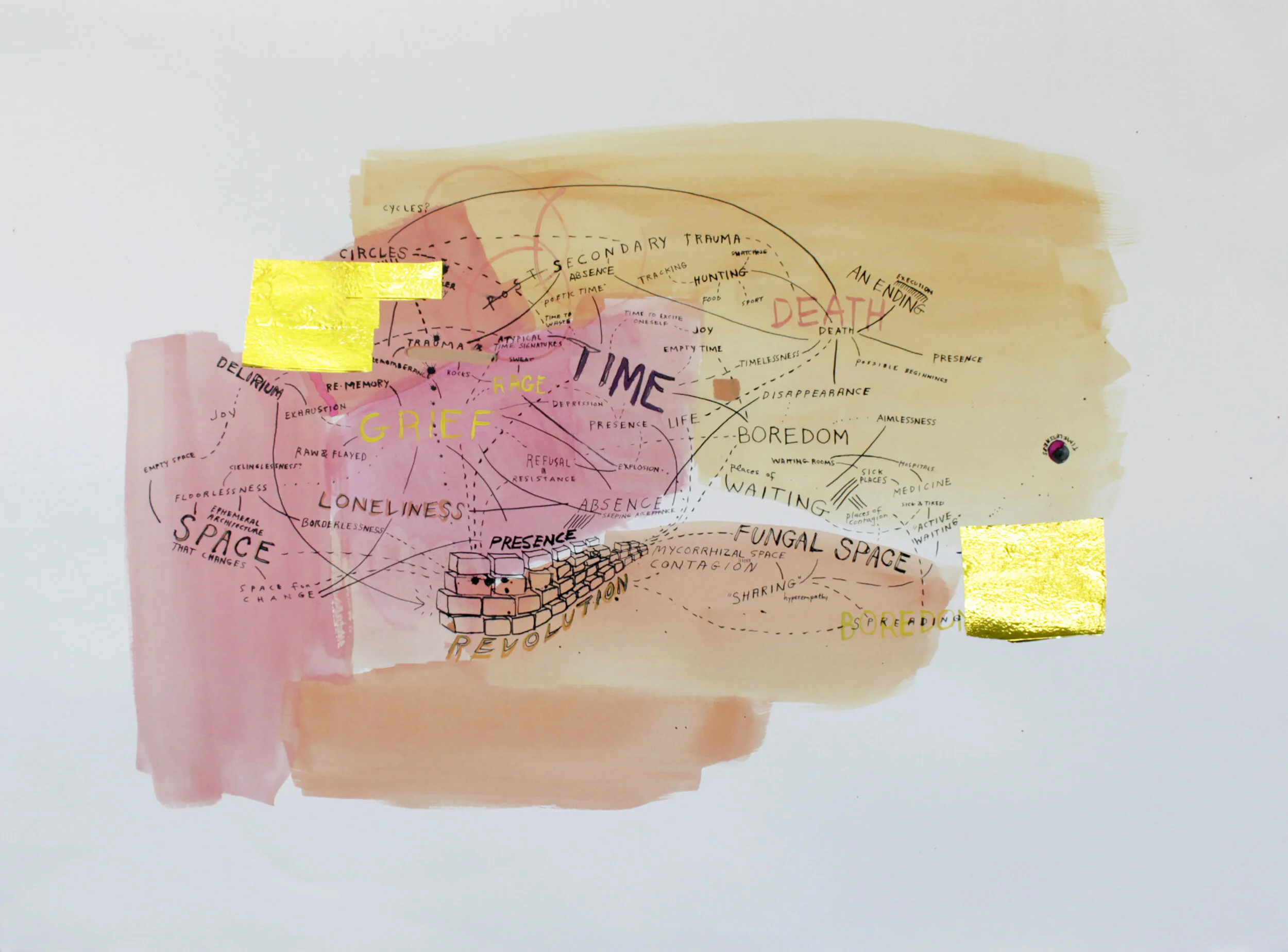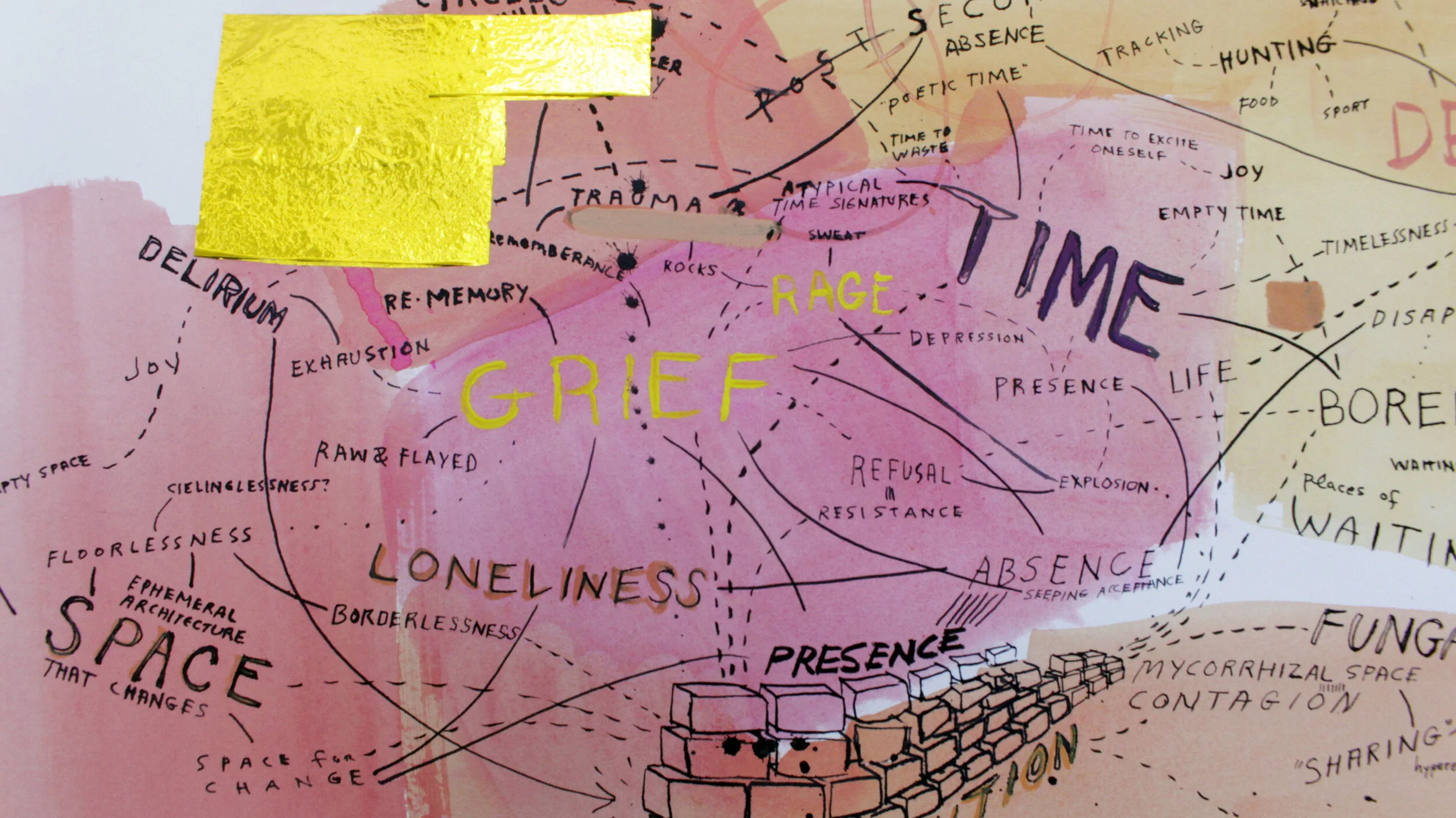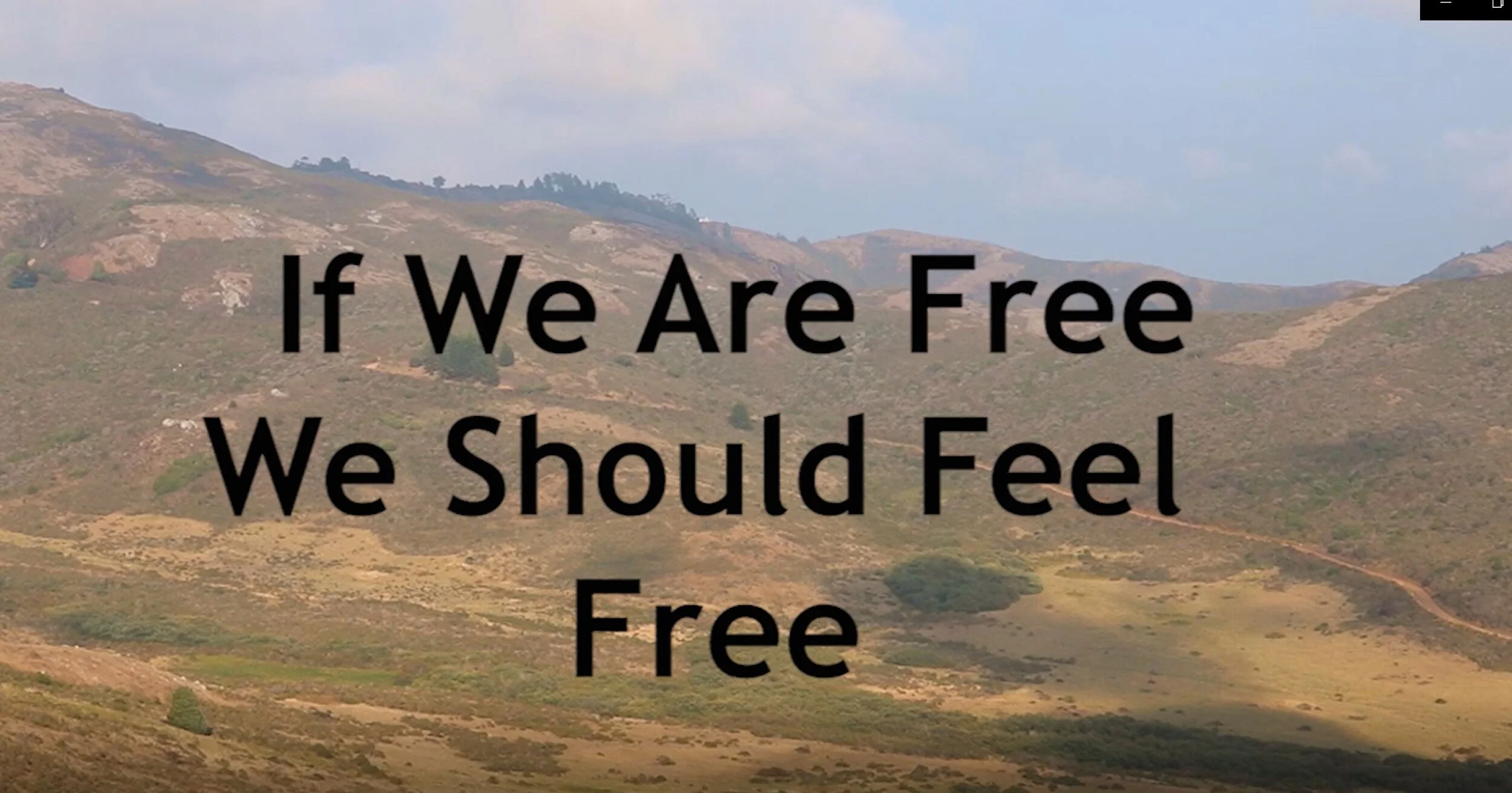Anna Martine Whitehead
Artist-In-Residence 2019/20
Arts + Public Life (APL) and the Center for the Study of Race, Politics, and Culture (CSRPC) are proud to present projects by their 2019/2020 Artists-in-Residence. This virtual exhibition features new works, current projects, and interviews with one of our artists Anna Martine Whitehead.
Notes on Territory | Arts + Public Life, Arts Incubator | October 5, 2018.
Image credit: Daris Jasper
Notes on Territory | Green Line Performing Arts Center | November 22, 2019.
Image credit: Daris Jasper
Anna Martine Whitehead (she/they) does performance. She has been presented by venues including the Chicago Museum of Contemporary Art; San José Museum of Art; Velocity Dance Center; Chicago Cultural Center; Links Hall; AUNTS; and Yerba Buena Center for the Arts. She has developed her craft working closely with Onye Ozuzu, Jefferson Pinder, taisha paggett, Every house has a door, Keith Hennessy, BodyCartography Project, Julien Prévieux, Jesse Hewit, and the Prison + Neighborhood Art Project, among others. She has been recognized with awards and fellowships from the Graham Foundation, Portland Institute of Contemporary Art, 3Arts, Chicago Dancemakers Forum, Foundation for Contemporary Arts, Headlands Center for the Arts, Rauschenberg Foundation, and Djerassi. Martine has written about blackness, queerness, and bodies in action for Art21 Magazine, C Magazine, frieze, Art Practical; and has contributed chapters to a range of publications including Queer Dance: Meanings and Makings (Oxford, 2017), Organize Your Own: The Politics and Poetics of Self-Determination Movements (Sobsercove, 2016), Platforms: Ten Years of Chances Dances (2016), and Girl Zines: Making Media, Doing Feminism (NYU, 2009). Martine is the author of TREASURE | My Black Rupture (Thread Makes Blanket, 2016).
Notes on Territory | Arts + Public Life, Arts Incubator | October 5, 2018.
Image credit: Daris Jasper
Arts + Public Life curatorial team and Anna Martine Whitehead discuss her practice, upcoming projects and what it means to be an artist in 2020.
APL: What are some of the recurring themes found in your work?
AMW: Containment, freedom. Invisibility, time, memory, forgetfulness. Self-taught and iterative approaches to making. Thinking, studying, articulating through language.
APL: What do you hope that a viewer will leave with after experiencing your work for the first time?
AMW: I don't think I think about that very much. I would like for them to be engaged in whatever way that means for them.
APL: Can you walk us through a typical day of your studio practice?
AMW: No! Hahaha. Since Rona there is no typical and my entire way of making has been up-ended. Before Rona I would say: if I'm in a dance studio I spend time on the floor, resting, doing physical experiments. If I'm with folks we do that together. If I'm at home, I might be drawing, reading, or writing. Now, since Rona, I'm not sure. I'm very distracted all the time and often feel lucky to get a couple of hours to focus at any one time. I play a lot of music on the keyboard, I write a lot. There's a lot of coordination with the project (about 8 or 9 collaborators), so very much corresponding over email, text, and phone calls.
APL: Are there any rituals that have found their way into your practice?
AMW: I would say with Rona, no, unfortunately. The only ritual is rehearsals with my cast. We do that every week, sometimes 2x weekly. We always check-in and catch-up. Those are the rituals.
FORCE! open jam session at the Graham Foundation with shawné michaelain holloway and Seth Parker Woods, 2019.
APL: How do you make a distinction between just an interesting idea and something that needs to be produced, and shown? What tips that scale?
AMW: Haha. I don't think I do, usually. Not until the very end when I see there is "a piece" and then I can begin to edit it down. But usually there is at least a year or two of building an abundance of stuff. I always have lots of stuff -- physical material, movement material, words and text, other objects, sounds. I start to put it together like a puzzle and you just see what fits. Whatever doesn't fit in the puzzle gets edited away.
APL: How can the arts community remain authentic and connected in our current climate?
AMW: Not sure I understand this question because I don't know what is meant by authentic. The hyperobjects that seem to be defining our moment, as I see it, are Anti-Black Racism, Global Warming, and Coronavirus in the Context of Neoliberalism. I think that small-scale mutual-aid works resist all three of these hyperobjects and also help connect humans. What I've seen since March is: large institutions cannot properly take care of their constituents, but small-scale locally-run projects can. They are more nimble, have less to lose, and are used to working hard and being scrappy and creative. They are usually run by artists. Many in Chicago are run either by BIPOC or by white people who cannot afford to be aggressively racist because their aid network is too small. It seems that this is how the arts community will survive -- this and the big institutions giving over more money to these spaces and to individual artists / artist collectives. I think ultimately for artists and the free-spaces that engender creative thinking to thrive, large institutions will need to undo themselves.
APL: Are there any artists or art projects bringing you joy right now?
AMW: Yes! jaamil olawale kosoko's project with EMPAC earlier in the spring was so grounding! I've loved every talk Fred Moten has been a part of during Rona, it's been like a spiritual guide. His work with Wu Tsang -- and Wu Tsang's practice in general -- has been helpful for the making of FORCE! There is a small group of Black faculty at the School of the Art Institute (which I'm a part of), that has been a very important circle for me this summer-- we are organizing to protect ourselves, our Black students, and ultimately disentangle contemporary artmaking in Chicago from white supremacist institutions.
APL: What project are you super excited to produce?
AMW: I'm making FORCE! It's an opera in 3 acts about a small group of women and femmes of color who are waiting to get inside a prison and escape an expanding mold that causes memory loss. We were just awarded a MAP grant and are getting ready to launch a 3AP crowdfunding campaign. One thing I'm excited about: paying queer people of color to make art. Even though there's no way to imagine producing this in the next year and likely longer, I'm excited about the piece that will some day exist. I'm really looking forward to the day when sweaty Brown and Black bodies can come together and sing loudly and shove against one another and dance wildly. For some audiences, this is never going to be welcome, but for others it will be exactly the medicine they've been craving.
FORCE! mind maps by Anna Martine Whitehead.
FORCE! (our labor has become more important than our silence), 2020.
This video is a document of the rehearsal process for FORCE! an opera in three acts. This project brings together Black and Brown queer and trans women and femmes in an exploration of the prison waiting room and a meditation on abolition and resistance.
EXPLORE WORKS BY
VIRTUAL PROGRAMMING
Watch Martine’s What Are We Rehearsing For, air date June 16, 2020 on Facebook Live.










